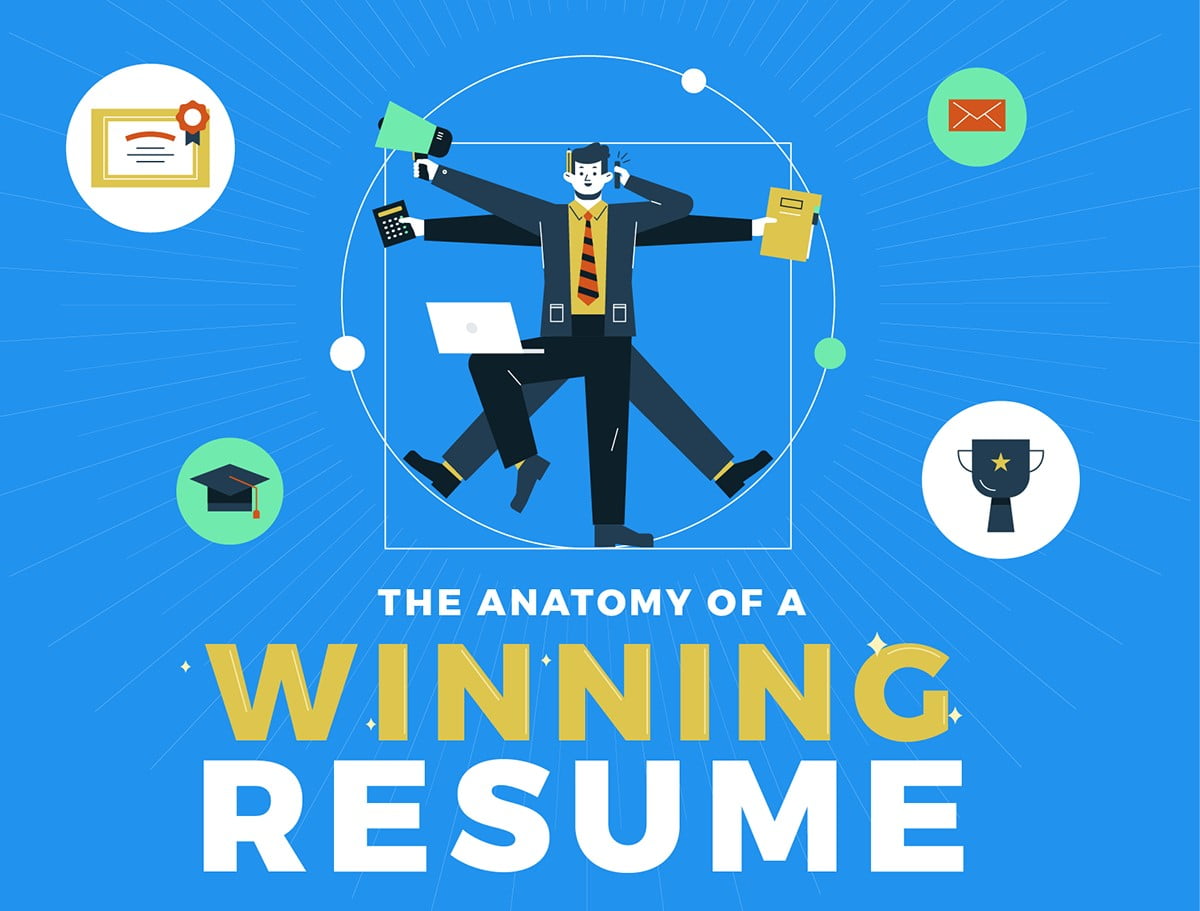Job searching can be exhausting. After all, nobody likes rejection piled on top of even more rejection. And it can feel extra frustrating if you’re not even getting a chance to show recruiters what you’re made of. And so to help you get that all-important foot in the door and impress potential employers, CV builder Resume.io has put together an infographic on what makes the perfect CV.
Q2 2021 hedge fund letters, conferences and more
Writing A Job-Winning CV
The handy guide walks you through the process of crafting a job-winning CV. You'll learn about what to include, how to arrange the different sections in a logical order, and valuable tips on highlighting your strongest qualities in a way that makes you stand out from the crowd.
For example, is your name highlighted in a bigger and bolder text at the top of your CV? If not, you're missing out on the chance to really grab your potential employer's attention. And what email address are you using in the contact information section? Hopefully, it's a professional-sounding email that suggests you're a serious candidate. Because while your best pal might get a chuckle out of it, future bosses and recruiters don't appreciate amusing (or immature) email handles. So no bigboy69@hotmail, OK?
The guide also includes expert advice from recruitment advisers and specialists, including Knockout CV author John Lees. A well-known career coach with over ten years of experience in the recruitment industry, Lees shares his views on writing a captivating summary that gets right to the point. Lees tells all his clients the same thing when it comes to the summary. The few first words are critical, believes Lees, “because that's how long you usually have a hiring manager's attention for.” In other words, cut out all the filler and fluff. Instead, get straight to the point, making sure the first line of your summary matches the job description. So switch sentences like "I'm a hard-working, committed, and extremely motivated person with over a decade of experience working as a clinical social worker” for something more concise, such as, "I am a licensed Clinical Social Worker with over 10 years of professional experience."
There's some similar advice for anyone struggling to write their achievements and skills section. Again, the secret to writing a killer achievements section is brevity. So keep it short and super-relevant, using bullet points rather than paragraphs. Opt for strong and active words, like achieved and designed, and back up everything you say with hard data. The achievements and skills section isn't for boasting about how great you are; it's for proving how great you are!
The Most Important Sections Of Your CV
The CV building guide suggests putting your work and education history next. These are generally the most important sections of your CV. However, you don't need to include your entire life history. Just focus on the roles and qualifications that are most relevant. Then work back in chronological order, including some brief bullet points covering what you studied or your work responsibilities. And don't worry about overexplaining any work or school gaps. According to a recent survey by the Harvard Business Review, 87% of recruiters are unconcerned with short periods of unemployment or a break from higher education.
Most people like to add a hobbies and interests section. But is it the right thing to do? According to the Resume.io guide, the answer depends on what type of job you're applying for. If you're applying for a creative role, then talking about your own creative pursuits is super-relevant. But whatever you end up sharing, keep it neutral, avoiding anything linked with political affiliations or controversial topics.
After outlining the general principles of great CV writing, the Resume.io guide focuses on some more specific tips and hints, such as formatting, what NOT to include, and how to send your CV to employers.
There's also a section on finding and using the right keywords to ensure your CV gets picked up by recruitment screening software. In fact, this is one of the most valuable pieces of advice for candidates applying for jobs in the digital age. Applicant Tracking Systems - or ATSs - are the recruiter's new best friend. These automated systems scan CVs for keywords and phrases relevant to the advertised position, siphoning out candidates who don't meet the job criteria. Understanding how these systems work is a guaranteed way of securing more interviews with 'real' hiring managers. The following guide tells you how to write a CV for an ATS system, including the free online tools you can use to identify the keywords ATS systems are programmed to find.
Writing the perfect job-winning CV can be a daunting and confusing experience. But this guide will make it so much easier. And, most importantly, it will boost your chances of getting that job you're dreaming about.







